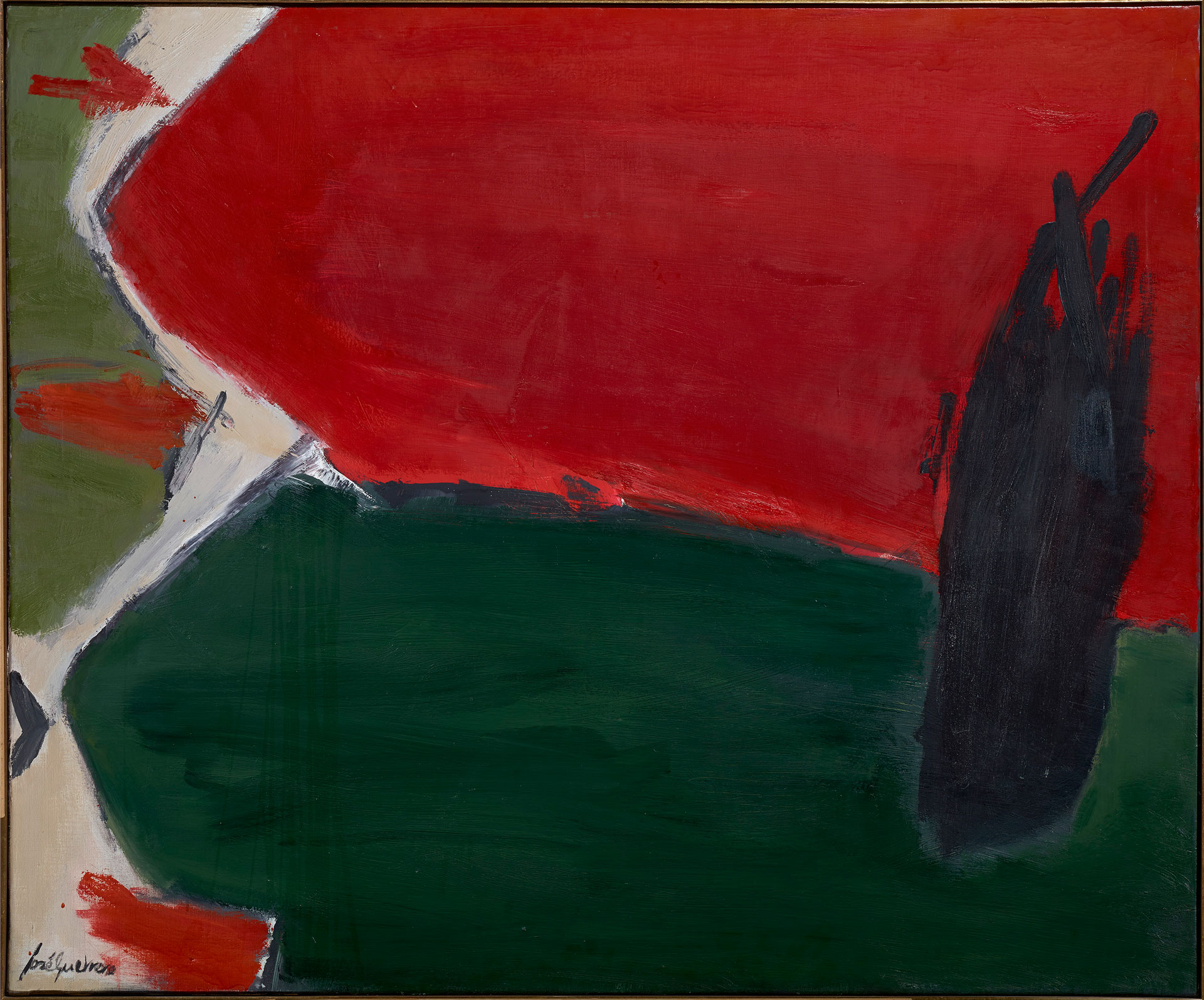
José Guerrero (Granada, 1914 – Barcelona, 1991)
Landscape
1967
WORK INFORMATION
Oil on canvas, 100 x 120 cm
José Guerrero was, like Esteban Vicente, an exception among his contemporaries. While the Spanish painters of the abstract generation were heading to Paris to discover contemporary art, Vicente and Guerrero settled in New York and were the only two Spanish painters who had direct contact with the American Abstract Expressionists.
Born in Granada, Guerrero studied at the San Fernando School of Fine Arts in Madrid and lodged at Casa de Velázquez during those years. In 1945, he was able to experience the Parisian art scene thanks to a grant from the French government. That visit was only the first stop on a European adventure that took him to Switzerland and Italy. In Rome he met the American journalist Roxanne Whittier Pollock, whom he married in 1948. The following year the couple moved to the United States, and in 1950 they made New York their home.
The Spanish painter's early days in the city were not easy, but in 1954, after exhibiting with Joan Miró at the Arts Club of Chicago, he began to work with the art dealer Betty Parsons, whose prestigious gallery showcased the paintings of Jackson Pollock, Mark Rothko and Barnett Newman. As a result of his exposure to action painting, in the late 1950s Guerrero's work became markedly gestural and matter-rich, with a colour sensibility carried over from his years in Europe.
The New York scene which the painter navigated successfully in those years changed radically with the advent of Pop Art in the early 1960s. This circumstance, combined with a personal crisis, precipitated Guerrero's return to Spain in 1965. By that time the Spanish art world had changed considerably: Juana Mordó had opened her gallery the previous year, and the next Fernando Zóbel would open the Museo de Arte Abstracto Español in Cuenca.
The homecoming gave his painting a new sense of order. To a certain extent, the energy he had hitherto tended to splatter across the canvas began to find balance. Although gestural tension was still present, his compositions achieved a better equilibrium. This newfound order is clearly illustrated in his 1967 canvas Paisaje [Landscape]. Here tension is conveyed by the directional orientation of the two large colour fields. However, while these point in one direction, the presence of smaller red counterpoints resembling arrows balances out the composition.
The artist's output during these years, as Juan Manuel Bonet has noted, consolidated what we might call "the Guerrero system". It was then that the painter began to attach importance to limits and boundaries, to the areas where a colour begins or ends. In the decade that followed these borderline spaces would become one of Guerrero's primary preoccupations: the action would be shifted from the centre of the canvas to the corners, the outlying fringes intuitively foreshadowed in this Landscape. [Inés Vallejo]

